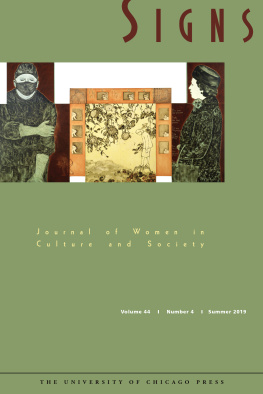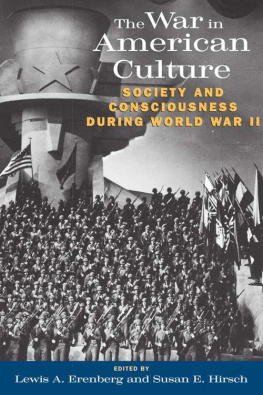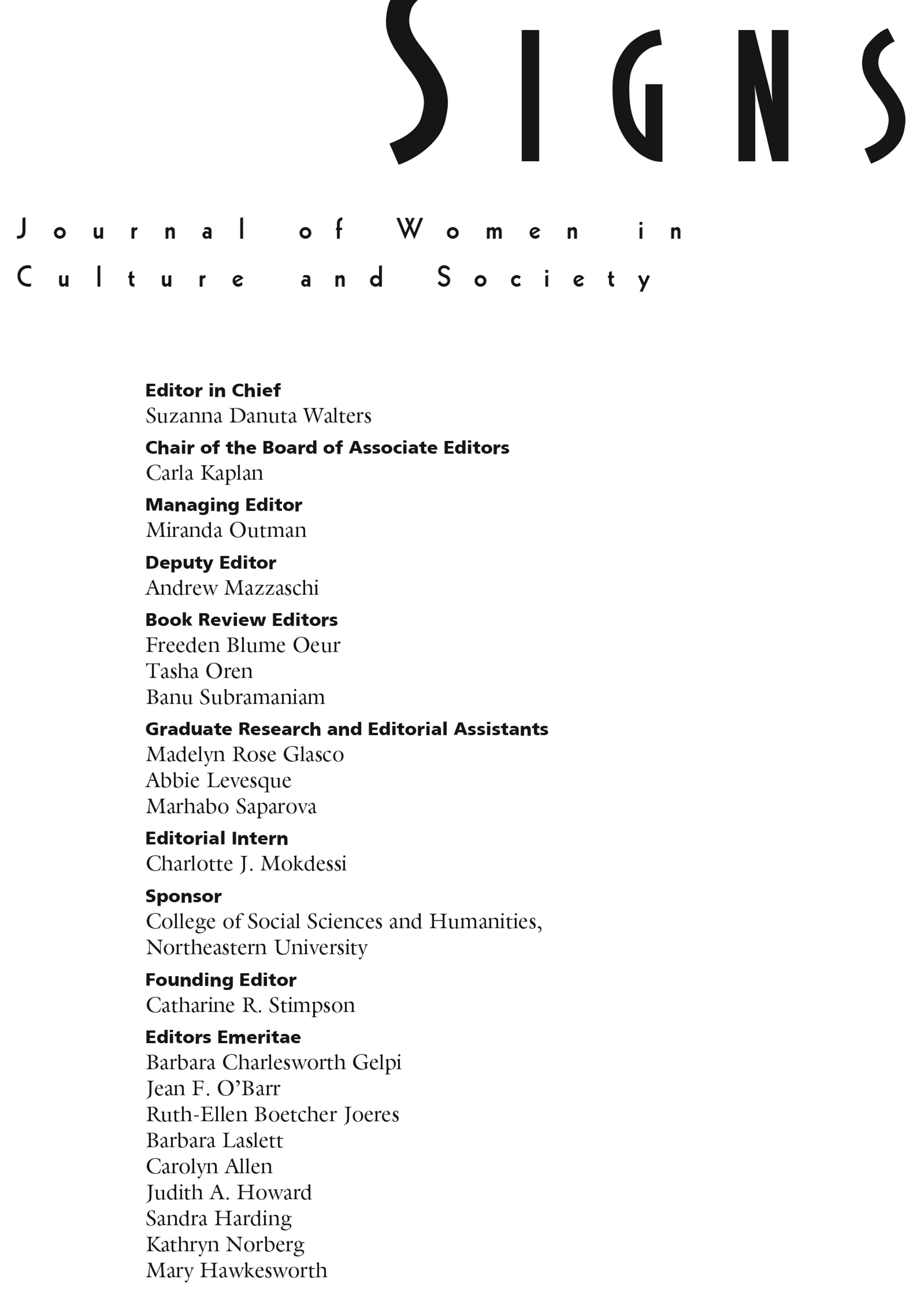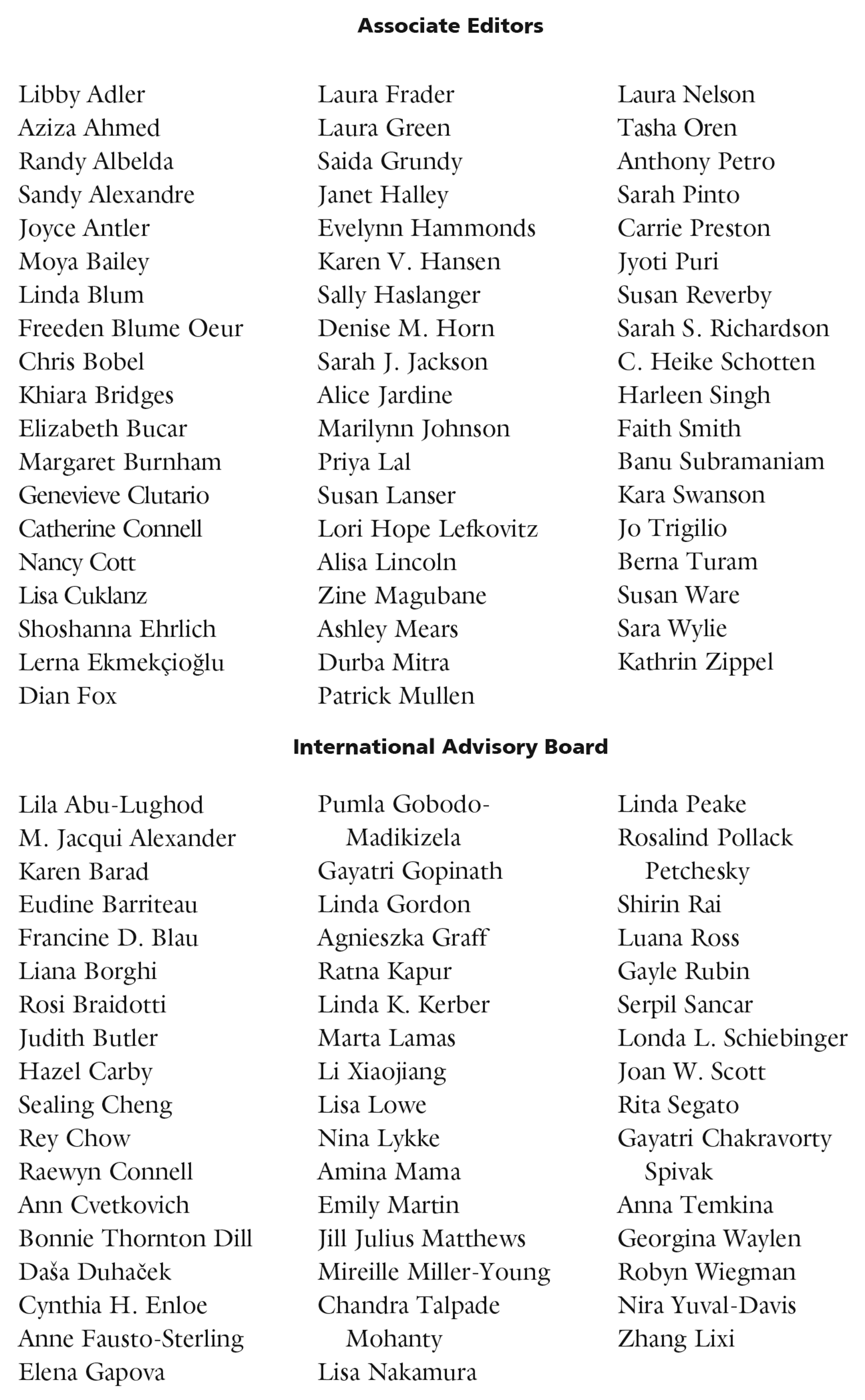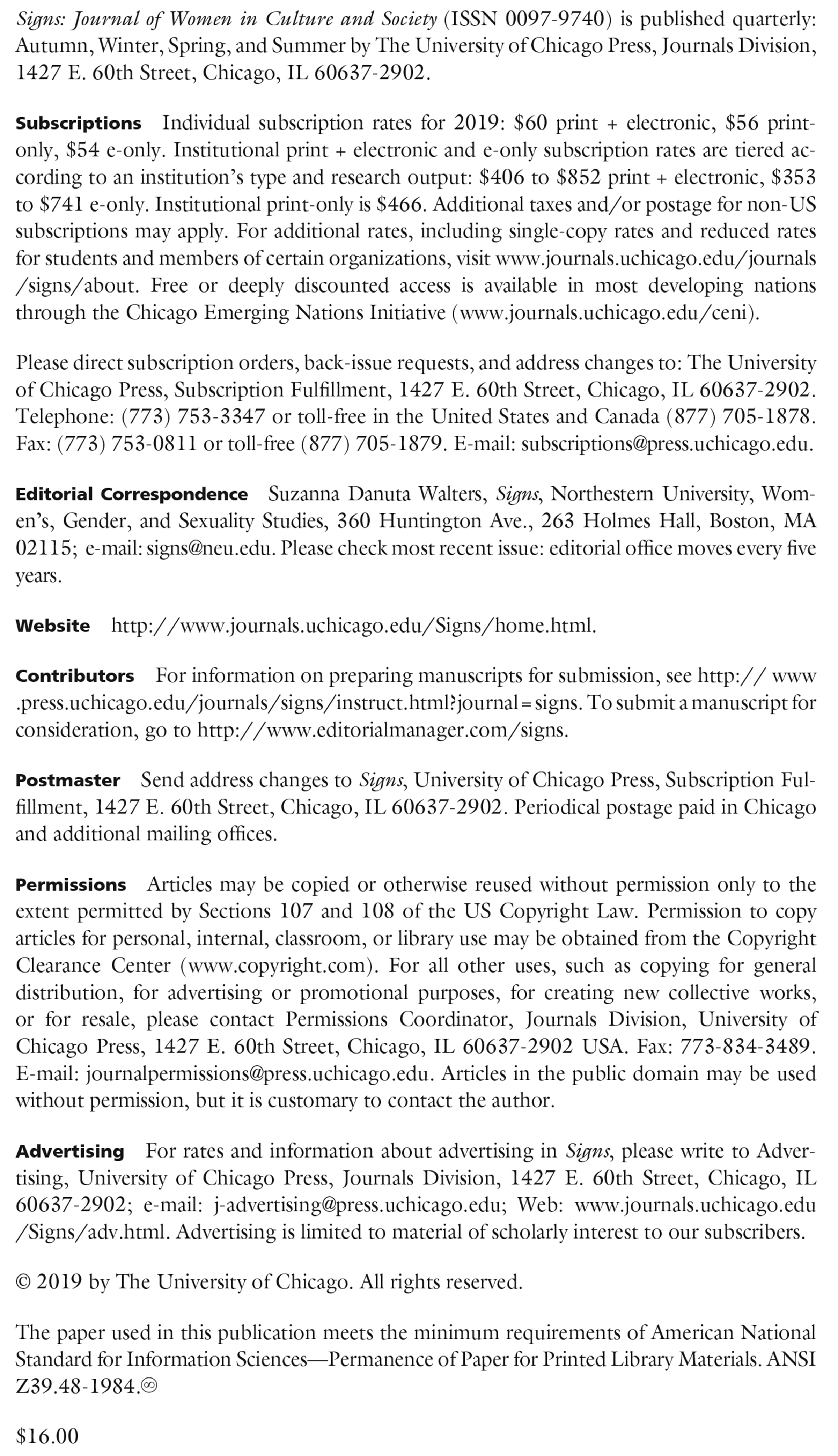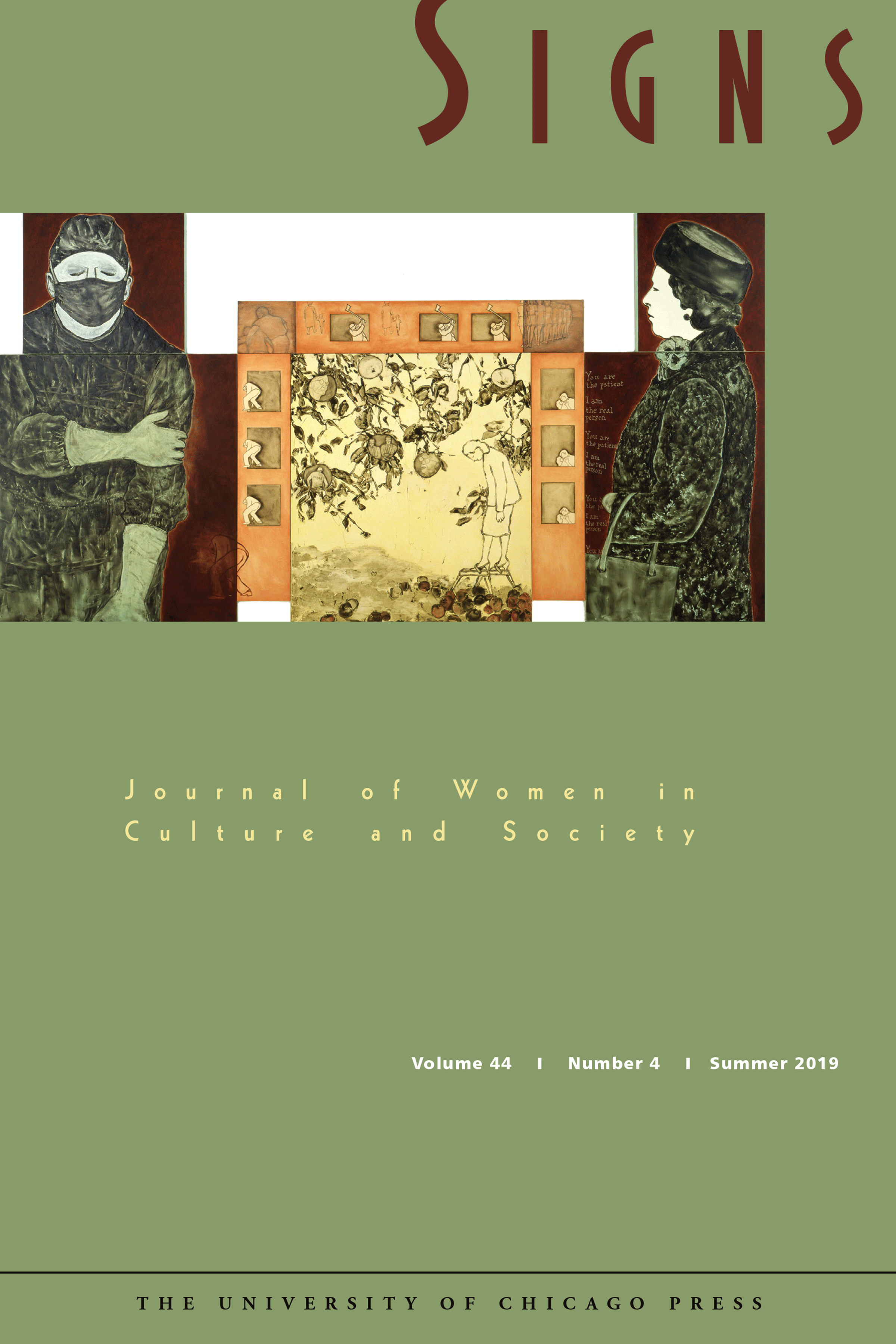Emily A. Owens
Dana M. Olwan
Catharine A. MacKinnon and Durba Mitra
rene c. hoogland
Abstract
This article discusses how perpetrators and victims are constructed in legal rape cases and how these constructions are informed by notions of gender, sexuality, race, and nation. It presents an in-depth frame analysis of two legal cases that were processed by Norwegian appellate courts in 2012. In so doing, I show how the allocation of shame and sympathy for victims and perpetrators is connected to citizenship through gender and race discrimination. The analysis suggests that whereas the perpetrator with a majority racial background was subject to so-called reintegrative shaming, the perpetrator with a minority racial background was subject to stigmatic shaming. The politics of shame in the context of rape thus manifests as an attribution of guilt (but to a lesser extent shame and stigmatization) to the majority perpetrator, whereas the minority perpetrator was constructed as a deviant outlaw deserving of public shame. Prior relationship with the perpetrator, sexually risk-taking behavior, and alcohol consumption were associated with negative stereotyping of victims. Moreover, the court regarded violence committed by the perpetrator from a racial-majority group as a deviation from the civilized and gender-equal mainstream culture. I therefore argue that geography constitutes a specific element in the legal processing of rape cases. With the prosecution of rape as a medium, the courts produce and reproduce a moral community in which some sexual citizens are admitted a share and others are not, while the legal process simultaneously manages the sexual rights of citizens in different physical and social spaces.
Bearing in mind the feminist insight that the personal is always political and that withholding sympathy is a powerful tool to keep people in line, the construction of rape is not only a legal issue but also a profoundly political one. Writing about the political history of rape in the United States, Estelle Freedman (, 229).
In this article, the allocation of guilt is understood as a practice of reintegrative shaming whereas the allocation of shame is thought of as a practice of stigmatic shaming. According to Erving Goffman (
More specifically, the legal processing of rape cases will be used as an entry point to explore the interconnectedness between the geography of rape and the politics of shame. I take the geography of rape to be a process in which the courts produce and reproduce a moral community where some sexual citizens (Weeks ) are admitted and others not, while the legal process simultaneously manages the sexual rights of citizens in different physical and social spaces. The politics of shame, on the other hand, is defined as the ways courts construct human beings as deserving either of punishment and blame or recognition and sympathy. Before I turn to an empirical analysis of this issue, I will next present an introduction to the gendered and racialized politics of shame in Norway.
The gendered and racialized politics of shame in Norway
Whereas the United States is popularly conceived of as a nation built by immigrants, the opposite can be said about Norway. In the late 1960s and 1970s, labor migration acquired a more global character when a number of Pakistanis and Turks settled in Norway. Many of them got jobs in the service sector, primarily in cleaning, restaurant, and retail, as well as taxi driving (Gullestad Compared to other European countries, such as Sweden and Germany, Norway has received relatively few refugees during these global crises, and the numbers have declined over the past five years. This is because the current government, a coalition of two liberal-conservative parties, has endorsed a more restrictive immigration policy.
According to Marianne Gullestad ().
Most immigrants in Norway live in the capital, Oslo. As in Sweden and Denmark, concerns about ghetto formations and parallel societies are frequently brought to the fore in the Norwegian immigration debate, and manyespecially right-wing and conservative opinion leaders and politiciansclaim that the welfare state is under pressure (Gullestad , 187).
Similar to the United States and countries elsewhere in Europe, the immigration and integration debate in Norway has been a venue for a variant of so-called sexual exceptionalism (Puar ), is problematized in these debates. In recent years, gender-based violence has gained status as a particularly forceful symbolic currency in the immigration debate, where themes such as genital mutilation, forced marriage, and the occurrence of stranger rapes committed in public spaces by men with African and Middle Eastern backgrounds have attracted a lot of attention.
As I note above, sexual violence is known to be a particularly contentious site for meaning making and stereotyped value judgments in relation to gender, race, and sexuality.).
These findings resemble the situation in Norway, where sentencing practices are stratified according to gender, space, and race (even when controlling for excessive use of violence and other aggravating circumstances). Offenses committed by majority men in private spaces toward women they know are treated more leniently than offenses committed by dark strangers in public spaces (Bitsch and Klemetsen ).
Although the legal protection of rape victims and victims of domestic violence has been remarkably strengthened in Norway over the years, many still have to prove, or substantiate, that they did not consent to sex or in any way provoke the violence, when they testify in court. Cross-examinations include questions about alcohol habits, sexual preferences and promiscuity, previous victimization, possible revenge motives, and mothering capabilities (Bitsch and Kruse ).
Whereas feminist and sociolegal studies of the legal processing of rape cases have become a relatively well-established research field, particularly in common-law jurisdictions such as Great Britain and the United States, there has been little research on the sentencing practices carried out in Norway. Insofar as context shapes cultural understandings of citizenship and rightsin short, who are deemed worthy members of physical and moral communitiesan assessment of how this is accomplished in one of the most gender-equal countries in the world is much warranted. Moreover, this study adds to a comparative study of rape law in its investigation of how racialized and gendered legal subjects are constructed in a national context without a historical past of colonialism or slavery but with increased right-wing populism and xenophobia.

